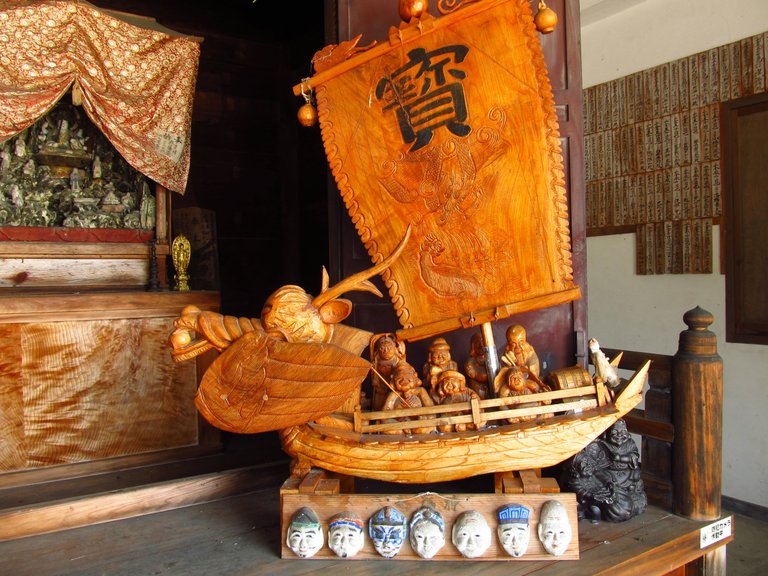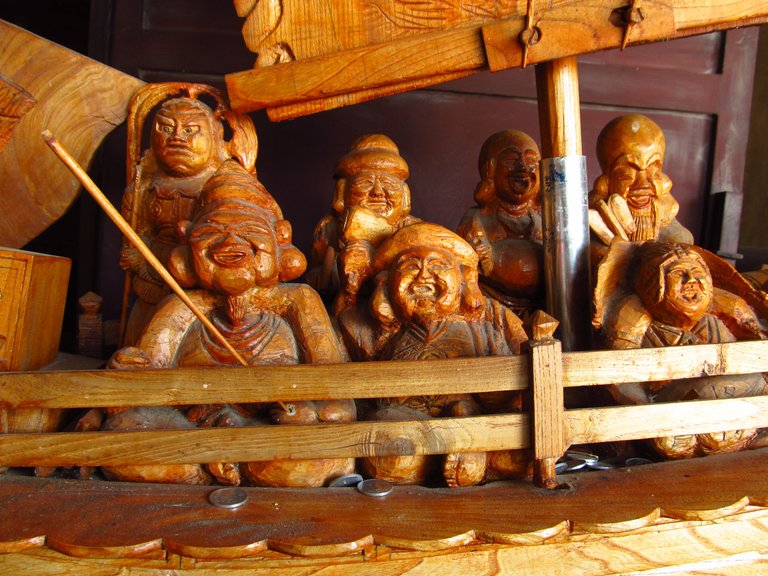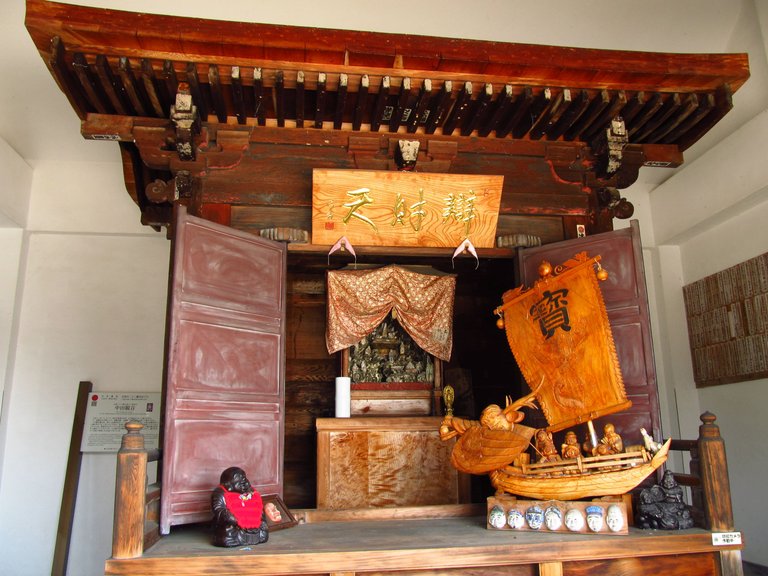This time I would like to introduce you to some very interesting fellows that I have already met several times here in Japan. They have also appeared in my posts a few times, so I feel it's about time to give them a little more space.
I'm talking about the Shichifukujin (七福神), the Seven Gods of Fortune. This is a group of fortune-bringing Japanese gods, some of whose origins come from completely different religious traditions, such as Buddhism or Taoism.
These gods of luck have been known and recognized as such for over a thousand years. Initially, they were worshipped by merchants, as some of them are gods of business and trade. Later, other classes of Japanese society, such as artists and scientists, also sought and found gods that could correspond to their professions.
In the past, these gods were worshipped separately, but today they often appear as a group and all seven can be found together and at least very close to each other.
Here are our Seven Gods of Fortune:
We start in the first row from the left...
Ebisu (恵比寿) is the god of prosperity and wealth in business. He is the only one whose origin is purely Japanese and he is also the patron saint of fishermen and is often depicted with a fishing rod and a fish.
Daikoku (大黒天) is the god of trade and prosperity and is sometimes regarded as the patron saint of cooks, farmers and bankers as well as the protector of harvests. He is also considered a demon hunter. This god is characterized by his smile, his short legs and the hat on his head.
Benzaiten (弁才天 or 弁財天) is the only female fukujin. She is said to have the attributes of financial wealth, talent, beauty and music. She carries a biwa, a traditional Japanese lute-like instrument, and is the patroness of artists, writers, dancers and geishas.
Bishamon (毘沙門) is the god of good fortune in wars and battles and is also associated with authority and dignity. He is the protector of those who follow the rules and behave appropriately.
Fukurokuju (福禄寿) is the god of wisdom, happiness, longevity, wealth and good fortune. He is the only god believed to have the ability to resurrect the dead.
Hotei (布袋) is the god of luck, the protector of children, the patron saint of fortune tellers and bartenders. He is depicted as a big, smiling, bald man with a curly moustache. He always appears half-naked, as his clothes are not wide enough to cover his enormous belly.
Juroujin (寿老人) is the god of the elderly and longevity and is said to be based on a real person who lived in ancient times. He is said to have been about 1.82 meters tall and to have had a very long, distinctive head and is often depicted with a long white beard.
The different origins of the Shichifuku-jin illustrate the syncretism typical of Japanese religion, in which customs and traditions from a wide variety of cultures and religions can be mixed together and coexist.
According to Japanese folklore, the shichifuku-jin travel on a mythical treasure ship called takarabune (宝船). They are therefore often depicted together on a ship, and these days they can be found not only in Buddhist temples but also in Shinto shrines.
Today's pictures are from a temple in the Aizu region, but I have encountered our seven gods in many different places. For us, the most popular is probably Ebisu, after which an entire district in Tokyo was named.
We are always happy when we meet one of them somewhere and I hope I will find the time to introduce them all in more detail soon. Then I will finally be able to feature some of the photos which have been waiting to be published here for quite a while. But well, there's always something else that's worth showing, so I don't usually get around to everything I actually want to do.
But anyway, hopefully we'll be seeing our Shichifuku-jin here more often from now on. So you should definitely check back soon to make sure you won't miss anything...



